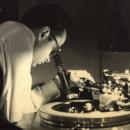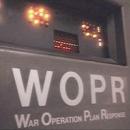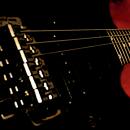Windows XP DAW Optimization Guide
Well Folks... It's that time again... A new OS... a New Tweak Guide.
This one is going to be pretty in-depth and requires some Registry Editing and other fun stuff of the sort!
This is what I do. Install OS, Install all hardware drivers, Tweak OS and then install software.
So..here we go
First thing is the installation.
Let XP install as ACPI.
This has been proven to be easier and smoother. Let Windows do its thing.
Hit F8 saying you agree (legal stuff ya know!)
Now, if this is an existing OS of say Win2k or a previous install of XP you will see options for:
Esc=Don't Repair; R=Repair F3 to Quit
Well, we're doing a fresh install so we want to hit
Esc for Don't Repair
Now, you'll see your drives and partitions here..
If you have Two "physical" drives it will show you these drives as C and D
Highlight C Drive
If you had an existing Install from any other OS press
D for Delete Partition.
Press Enter to Continue
Press L for Delete
Now, we're back at the drive selection screen again and this time we see Unpartioned space.
Highlight the drive you want to install XP onto
Press Enter to Install
Now we have to decide what File System do we use...NTFS or FAT32. Here's the lowdown.. I'm going to steal someone else's words here...
Daniel Keller from Tascam wrote this little blurb about NTFS Vs FAT32. I find this stuff very intriguing and indeed do agree!
--------------------------------------------------------------------------------
Tascam's Win2k/XP Document
FAT32 vs. NTFS
You have the option under W2k and XP to choose the file system that best suits your needs, FAT or NTFS. FAT (File Allocation Table) is
the native file system based on the Windows 9x kernel (including 95, 95a, 95b, 95c, 98, 98se and ME). NTFS (New Technology File System) is the native file system for operating systems based on the Windows NT kernel (including NT4, 2000 and XP). During the installation, Win2K or XP will ask if you want to convert the installation partition to NTFS. If you need compatibility for Windows 98 - especially if you want to dual-boot - don't convert.
While NTFS offers a number of improvements over FAT32, most of these advantages are not all that applicable to audio, and you are unlikely to see a major performance difference between the two. Moreover, defragmenting your drives (something you should do on a regular basis anyway) is substantially quicker in FAT32. Be aware that Windows 9x cannot read data on NTFS-formatted drives. Generally speaking, you should use FAT32 if you are doing a parallel installation with Windows 9x/ME, or if you will need to work with files created with a FAT32 system (opening old song files, working with others using FAT32-based systems, etc.) leave everything with FAT32.
One exception would be if you'll be working with video or other large files in excess of 4GB; or if you also use your PC to browse the internet or the computer is part of a LAN running XP Professional. Only NTFS can limit access rights to your files and therefore provide the security needed for a networked computer. In this case, select NTFS for all partitions except those which are to accommodate your audio data later.
One other interesting point: NTFS can read the "resource fork" of SDII files from MacOS, and can therefore recognize the timecode stamps used in these files; FAT(32) can't do this. If you do a lot of work with ProTools or other MacOS-based DAW applications, you should consider at least one NTFS partition in your system. (Note that this does not imply that your NTFS-based system can mount/read from a MacOS drive; simply that individual SDII files imported to an NTFS drive will retain their time-stamp information.)
End Tascam excerpt
--------------------------------------------------------------------------------
Most DAW users tend to go with NTFS file systems for the OS drives due to more stability and more security plus larger disk support.
FAT32 for the data drives. I've done both and don't see a performance difference either way.
Windows will begin it's file copying, Once it's done it will restart your machine. It's a good idea from here to enter into the BIOS to stop
the CD-ROM from being the first boot device.
Set the Hard Drive as the main boot. Also locate the Parellel Port mode in the BIOS and set it to EPP(Enhanced Parellel Port) This option is for those using copy protection devices for Cubase, Nuendo or Logic only! When you disable the Portable Serial Number service and have the Parellel Port set to ECP the copy protection key or "dongle" will not be found. Switching this to EPP fixes that issue.
Exit out and restart to begin the XP installation
Enter your Name and Organization (If applicable: you can leave it blank)
Enter your Windows Key
Name your computer!
Hit Next
Continue Installation
If you have a NIC card it will ask you what type of Installation do you want to choose: Typical or Custom
Do Typical for faster install
Ok. so now we have a fresh install of Windows XP.
When XP starts up every time you get that annoying Take the XP Tour pop up..click on it to open the tour..once in the tour simply exit
out and it wont open up anymore. Also Messenger starts up at the windows load up but we can get rid of that in no time at all..
Start Menu>Run
Type this in exactly as it is here:
RunDll32 advpack.dll,LaunchINFSection %windir%\INF\msmsgs.inf,BLC.Remove
Hit Enter...you will see a DOS-like shell appear and disappear very quickly and then it will ask you to restart.
Or if you just want to stop it from loading:
Double click on the Messenger icon in the system tray to open it.
Skip through the internet and sign up stuff, just cancel it.
When Messenger loads go to tools and Options then Preferences and uncheck 'Run this program when Windows starts'
Now...get rid of that Fisher Price look and go back to the Classic Windows interface. It's better for system performance when using as little colors
or graphics as possible:
Right-click on your desktop, and then click Properties.
Click on Themes tab
Set Themes to Windows Classic
Click on the Screen Saver tab
Set Screensaver to None
Press the Power button near the bottom
Power Schemes: you can have the monitor turn off but set Turn Hard Drives off to NEVER
Hibernate..If this is Enabled uncheck it. This is mainly for Laptops but uses a very large chunk of data.(I've seen this not show up on the first boot of XP..when you restart it will be there but it's disabled)
APM..Enabling this will allow your computer to shut down properly when in Standard PC mode
Hit OK
Click the Appearance tab.
On the Windows and Buttons menu, select Windows Classic
Press Effect button
Deselect all options.
Hit OK
Click the Settings tab
Set your bit depth to 16Bit. This is optimal for Audio machines due to less colors for video drawback which in turn gives you better audio
performance
Also do this for the Start Menu:
Right-click the Start button, and then click Properties.
Click Classic Start menu.
Click the Customize button to select items to display on the Start menu.
By default, selecting the Classic Start menu also adds the My Documents, My Computer, My Network Places, and Internet Explorer icons
to your desktop.
Right Click My Computer and select Properties:
System Restore tab:
Check the Turn System Restore on all drives.
Automatic Updates tab:
Turn Off Automatic Updates.
Remote tab:
Uncheck all options to turn off Remote Assistance.
Advanced tab:
Press Settings tab under Performance
Visual Affects tab:
set to Adjust for Best Performance.
Advanced tab:
Processor Scheduling:
Set this for Background Services
Memory Usage:
Set this for System Cache(**See Note Below**)
Virtual Memory:
Press Change...
Depending on how much RAM you actually have is what
you are going to enter here
If you have 256MB RAM set this to 512 for Min and Max
If you have 512MB RAM or higher set this to 384 for Min and Max
Restart your machine at this point in time...
When you come back the first thing you should do is defrag the main drive even if it doesn't say it needs it. This way the swap file has been truly
set and you're ready to continue.
*****NOTE******
*Using the System Cache setting with a Universal Audio Card is not recommended as it will effect overall performance with the card.******
Now is the time to Install your hardware drivers if you haven't done it already. It makes no difference what order you install the drivers in.
Turn off CD AutoPlay
Go to Start->Run->gpedit.msc
Computer Config -> Administrative Template -> System
Double click Turn off AutoPlay
Enable it.
Control Panel>Double click Sounds and Audio Devices...Go to the Audio tab
Set the Playback and the Recording settings to either
Your built in soundcard or a SoundBlaster(If Applicable)
Check Only Use default devices down below
Go to the Sounds tab
Under Sound Scheme choose No Sounds
Press No to saving the previous Scheme
Hit Apply
Now we get to play with the services!
********FIRST THINGS FIRST!! MAKE A BACK UP OF YOUR REGISTRY ***BEFORE ***
DOING ANY REGEDIT OR SERVICES TWEAKS OF ANY KIND!!!!!!!!**************
A little word about using the registry. The left hand side is your hierarchy of Windows. Those are the "keys" so to speak. On the right hand
side are the "values" for those keys. Now, typically in a registry we have a few types of values We have the String, Binary and a DWORD.
To create a new value simply right click in the "values" window and it will come up with NEW and you will see your three options for values. Typically
all the values in this tweak are DWORD values and I think one Binary. Each one is labeled as to what value it is. Also each value you create has
numbers and hexadecimal settings. Again, each tweak here has the appropriate information on what and when to enter them.
Start Menu, Run...type in regedit and hit OK...
Hit the Drop menu for Registry and select Export Registry..
save this to another drive for safe keeping's.
Now, let's stop that annoying balloon from popping up from our system tray
This is a Registry Tweak we have to do..
Start menu>Run...type in regedit
Hkey_Current_User\Software\Microsoft\Windows\Current Version
\Explorer\Advanced
If enableballoontips is there set the value to 0
If it doesn't enter it in as a new DWORD and put the value to 0
What we want to do is turn off certain "services" that are running in the background that we don't need while recording or playing out Audio Software.
Control Panel>Administrative Tools:
Double Click on Services
Here is a list of what I have disabled. Keep in mind my machine doesn't touch the internet or a network in any way. If you have an NIC or modem of any sort, I specified which ones and what settings with I=Internet and A=Automatic
Alerter Disabled
Application Layer Gateway Service Disabled
Application Management AppMgmt Manual
Automatic Updates Disabled
Background Intelligent Transfer Service Disabled
ClipBook Disabled
COM+ Event System EventSystem Disabled
COM+ System Application Disabled
Computer Browser Disabled
Cryptographic Services Disabled
DHCP Client Disabled (IA)
Distributed Link Tracking Client Disabled
Distributed Transaction Coordinator Disabled
DNS Client Disabled (IA)
Error Reporting Service Disabled
Event Log Automatic
Fast User Switching Compatibility Disabled
Fax Service Disabled
Help and Support Disabled
Human Interface Device Access Disabled
IMAPI CD-Burning COM Service Manual
Indexing Service Disabled
Internet Connection Sharing Disabled
IPSEC Services PolicyAgent Disabled
Logical Disk Manager Manual
Logical Disk Manager Administrative Service Manual
Messenger Disabled
MS Software Shadow Copy Provider Disabled
Net Login Disabled
NetMeeting Remote Desktop Sharing Disabled
Network Connections Manual
Network DDE Disabled
Network DDE DSDM Disabled
Network Location Awareness (NLA) Disabled
NT LM Security Support Provider Disabled
Performance Logs and Alerts Disabled
Plug and Play PlugPlay Automatic
Portable Media Serial Number Disabled
Print Spooler Disabled
Protected Storage Disabled
QoS RSVP Disabled
Remote Access Auto Connection Manager Disabled
Remote Access Connection Manager Disabled
Remote Desktop Help Session Manager Disabled
Remote Procedure Call (RPC) Automatic
Remote Procedure Call (RPC) Locator Manual
Remote Registry Service Disabled
Removable Storage Disabled
Routing and Remote Access Disabled
Secondary Logon s Disabled
Security Accounts Manager Disabled
Server Disabled
Shell Hardware Detection Disabled
Smart Card Disabled
Smart Card Helper Disabled
SSDP Discovery Service Disabled
System Event Notification Disabled
System Restore Service Disabled
Task Scheduler Schedule Disabled
TCP/IP NetBIOS Helper Service Disabled (IA)
Telephony Disabled
Telnet Disabled
Terminal Services Disabled
Themes Disabled
Uninterruptible Power Supply Disabled
Universal Plug and Play Device Host Disabled
Upload Manager Disabled
Volume Shadow Copy Disabled
WebClient Disabled
Windows Audio Automatic
Windows Image Acquisition (WIA) Disabled
Windows Installer Manual
Windows Management Instrumentation Automatic
Windows Management Instrumentation Driver Manual
Windows Time Disabled
Wireless Zero Configuration Disabled
WMI Performance Adapter Disabled
Workstation Automatic
Once you have set all of these close out of the services and restart
Do this for all NTFS drives:
Open My Computer>Right Click on C:Drive and select Properties.
Deselect Allow Indexing Servicing....Hit Apply
Select Apply Changes to C:\ subfolders and files
You might get a message that says Access Denied...press Ignore All
Now, click on the Hardware tab.
Double click on your Main drive
Click on the Policies tab.
Uncheck Write Caching.
This will help your main drive read faster. Only do this for the main drive!
By default, Windows 2000/XP log the I/O traffic of your hard drive. While this is a very useful setting for servers, for workstations it
doesn't do anything except use up system resources.
To disable it, go to the run menu and type
diskperf -n
Hit Enter to disable this logging.
Disable Error Reporting
Right Click on My Computer
Press the Advanced Tab
Press the Error Reporting Button
Choose Disable Error Reporting
OK...the true fun part of Windows systems...Regedit!
Here we will be doing some pretty snazzy stuff that I found very cool!
****Again...it may be a good idea to make a back up of the registry *****
Intel Chipsets need to have UDMA 66 enabled for Win2k and XP.
This also enables UDMA100
HKEY_LOCAL_MACHINE\System\CurrentControlSet\Control\Class\
{4D36E96A-E325-11CE-BFC1-08002BE10318}\0000
You will need to add this value in
Right click and select New..DWORD
Type EnableUDMA66 and hit Enter..and Double click it and put the value to 1
It should the look like this:
EnableUDMA66=dword:00000001
Again, this is really only for Intel chipsets.
Remove the Shared Documents folders from My Computer:
Windows XP user interface provides links to all of the Shared Documents folders on your system, right at the top of the My Computer window.
HKEY_LOCAL_MACHINE\SOFTWARE\Microsoft\Windows\CurrentVersion\Explorer\
MyComputer\NameSpace\DelegateFolders
Delete this Key
{59031a47-3f72-44a7-89c5-5595fe6b30ee}
NTFS Disk Performance
The NTFS file system is the recommended file system because of its advantages in terms of reliability and security and because it is required for large drive sizes. However, these advantages come with some overhead. You can modify some functionality to improve NTFS performance as follows:
Disable creation of short names. By default, NTFS generates the style of file name for compatibility with MS-DOS and Windows 3.x clients. If
you are not supporting these types of clients, you can turn off this setting by changing the default
HKEY_LOCAL_MACHINE\SYSTEM\CurrentControlSet\Control\Filesystem
NtfsDisable8dot3NameCreation set value to 1
Disable last access update. By default NTFS updates the date and time stamp of the last access on directories this update process can slow
performance. To disable:
HKEY_LOCAL_MACHINE\SYSTEM\CurrentContolSet\Control\Filesystem
You will need to enter this as a new Dword:
NtfsDisableLastAccessUpdate set value to 1
Reserve space for the master file table.
HKEY_LOCAL_MACHINE\SYSTEM\CurrentControlSet\Control\FileSystem.
You will need to enter this as a new Dword
NtfsMftZoneReservation set to 1
Reboot after making changes.
Speed up the Start Menu in Windows XP.
HKEY_CURRENT_USER\ControlPanel\Desktop
MenuShowDelay file set to 1
Click OK.
A restart is needed to see the results
Improve overall system performance by increasing the IRQ priority of the CMOS real-time clock.
HKEY_LOCAL_MACHINE\System\CurrentControlSet\Control\PriorityControl
You will need to enter this as a new Dword:
"IRQ8Priority" set to 1
Windows Explorer caches DLLs(Dynamic-Link Libraries)in memory for a period of time after the application using them has been closed. This can be an inefficient use of memory.
HKEY_LOCAL_MACHINE\SOFTWARE\Microsoft\Windows\CurrentVersion\Explorer
Create a new DWORD sub-key named
"AlwaysUnloadDLL" set to 1
Restart Windows for the change to take effect.
Speed up CD Copying to Hard Drives
HKEY_LOCAL_MACHINE\SYSTEM\CurrentControlSet\Control\FileSystem
You will need to create a Key here. Right Click on the FileSystem folder and select New>Key
Name it CDFS
CacheSize, this must be added as a binary value, then type in this value:
ff ff 00 00(it doesn't matter about capitals or lower case)
Prefetch, this must be added as a DWORD value, then type in this value:
4000 hex
PrefetchTail, this must be added as a DWORD value, then type in this value:
4000 hex
To Disable Dr. Watson
HKEY_LOCAL_MACHINE\Software\Microsoft\WindowsNT\CurrentVersion\AeDebug
Delete the AeDebug key
Ok...so far this is pretty tweaked out but now I've found some other tweaks that will make a non-internet machine even better with less programs!
Uninstall unwanted components
Locate sysoc.inf (windows\inf\sysoc.inf) on the main drive and make a backup of it Open the Sysoc.inf file. Each line of text in the file represents a component that can be displayed in the Add/Remove Windows Components dialog. Delete the word HIDE for any component that you want to see in the dialog (do not erase the commas). Save the Sysoc.inf file, then close it, and reboot your computer.
The Add/Remove Windows Components dialog will now display the items you want to remove.I have removed everything but the WMI, COM+ and
Distributed Transaction Coordinator!
Install Software!!!
Some notes...
******IMPORTANT NOTE ON FORMATTING YOUR SECONDARY DRIVES!!!!!******
In Windows XP you need to go into the Disk Manager in order to format, Repartition or make any changes necessary to any drive. This is found
in the Computer Management tools within the Administrative Tools found in the Control Panel. When you want to make a secondary drive active you must make it an Extended Partition and not a Primary Partition. The reason being is that on occassion Windows XP will look at it as an OS drive and may corrupt it making only 8MB available and the rest unallocated! This can be fatal to all your data on the drive!! So once you create the partition as Extended you will then need to make it a Logical Drive and then you can choose NTFS as your format of choice.
Level 2 (L2) CPU cache size can be sized this way, ONLY IF using earlier CPUs: Intel (and compatibles) 386, 486, Pentium, Pentium Pro, AMD K5/K6/K7, Cyrix, etc, with off-chip L2 cache SRAM memory (external, off the CPU die).
If using newer CPUs: Intel Pentium II/III/IV/Celeron/Xeon,AMD Athlon/Duron/Thunderbird, etc, with on-chip L2 cache SRAM memory (internal, on the CPU die), L2 cache size can *NOT* be altered!
I found that when doing these tweaks:
[HKEY_LOCAL_MACHINE\SYSTEM\ControlSet001\Control\Session Manager\Memory Management]
"ClearPageFileAtShutdown"=dword:00000001
[HKEY_LOCAL_MACHINE\SYSTEM\ControlSet001\Control\Session Manager\Memory Management]
"DisablePagingExecutive"=dword:00000001
Would cause the system to hang on restart and shutdown. Resetting all the values to 0 solved that
As far as USB Audio is concerned.
After reading all about the stuttering audio and BSOD's with XP and USB. Audio devices I got myself prepared with the Microsoft Patch for this fix. I found that I did not need this patch as audio through the Tascam US428 was flawless. I looped a 5 minute 24bit 16 track song for close to 30 minutes and switched songs to a heavier data count and looped that for 20 minutes. I recorded several tracks through the SPDIF in for 24bit recording and did multiple punch ins and takes without a single problem. As far as why my system is fine... who knows. There are too many configurations to truly explain this. Try these tweaks and if the problem goes away..cool! If not..can't say you didn't try!
There are some other tweaks that can be done as well such as:
Removing Outlook Express, Stopping the Messages during shutdown, Stopping the WinXP Splash Screen on load up, Decrease SystemPages and a few more that I haven't tested yet. You can do a search for these tweaks by using
http://www.google.com and typing in XP tweaks! Websites I found to be very useful were:
TweakXP.com








